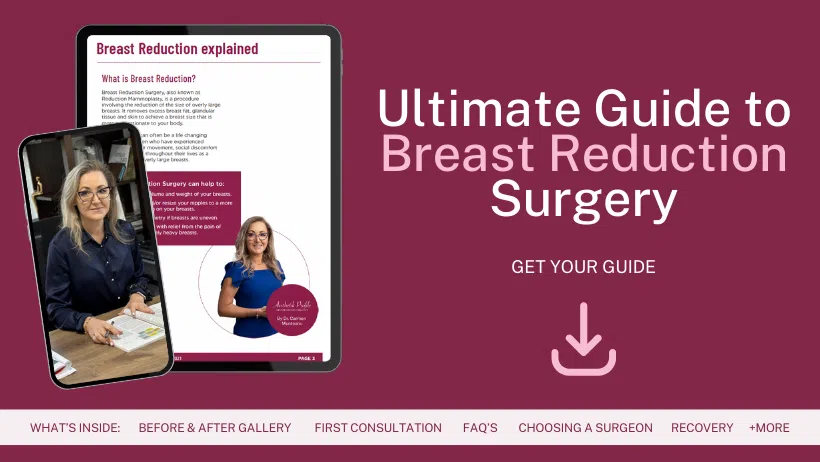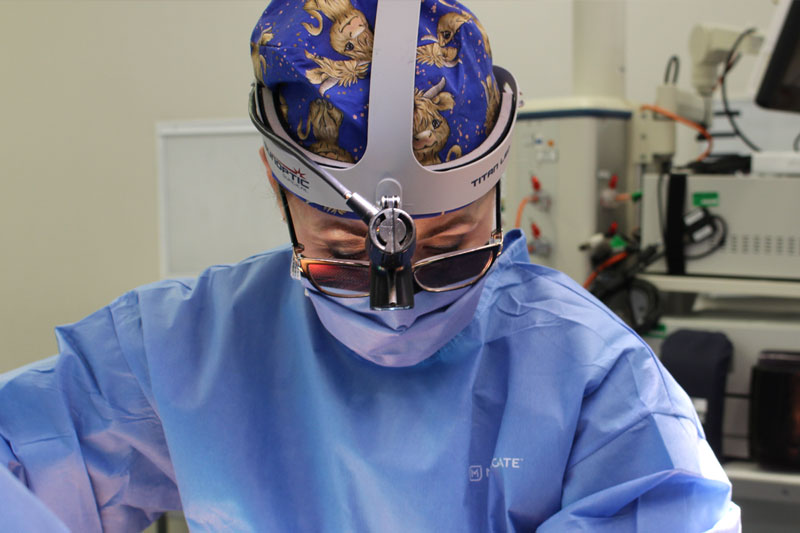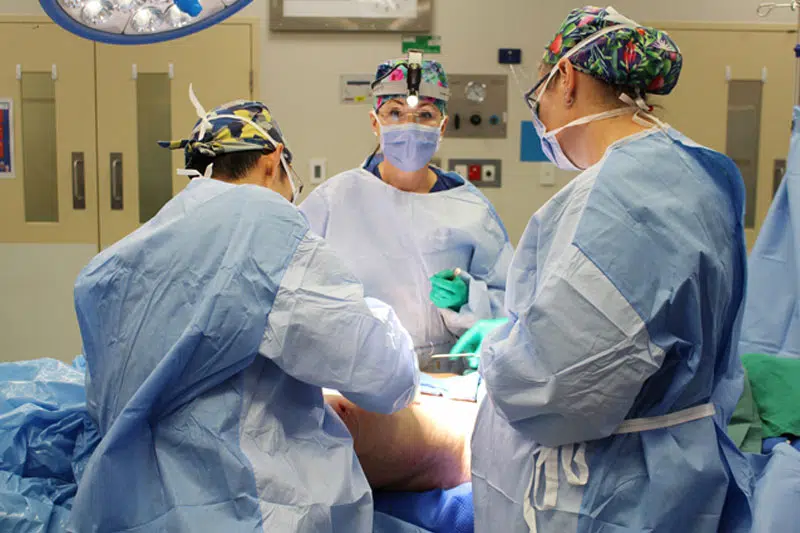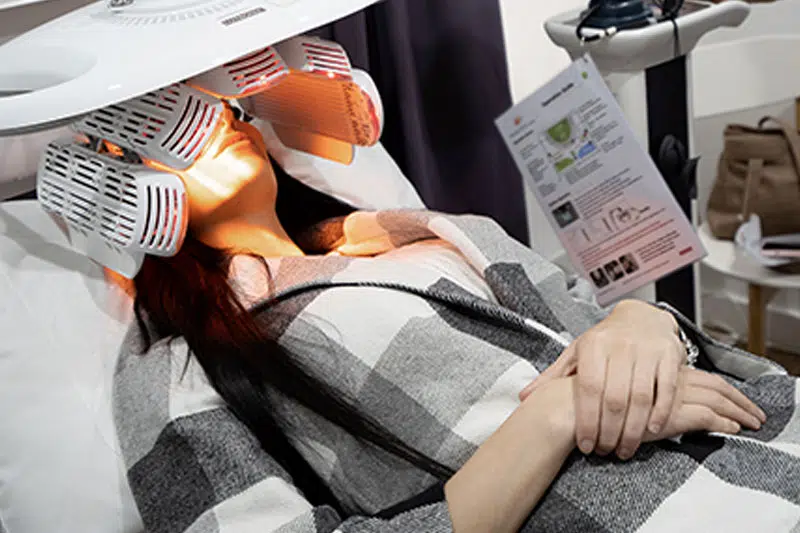Guide to Compression Garments after Arm Lift Surgery
If you’ve recently undergone an arm lift, also known as brachioplasty, you know that this surgical procedure is designed to remove excess skin and fat from the arms, creating a more streamlined look. It’s a popular choice for those who have experienced significant weight loss or are looking to improve the shape of their arms. After your surgery, taking care of yourself is key to a smooth recovery. One aspect of this post-operative care that stands out is the use of compression garments. These garments are commonly recommended to support healing and improve post-surgical outcomes. They apply gentle pressure to your arms, aiding in a reduction of swelling and supporting the new contours of your arms as they heal.
In this blog post, Dr Carmen Munteanu will guide you through everything you need to know about compression garments following your arm lift surgery. She will cover why they’re important, how to choose the right one for you, and tips for wearing them effectively.
Take our Plastic Surgery Quiz to find out if you’d be a good candidate and if you are ready for cosmetic surgery.
What Is Arm Lift Surgery?
An arm lift, or brachioplasty, is a type of surgery that aims to reshape the under portion of your upper arm, from the elbow to the shoulder. The goal is to remove excess skin and fat, which might be the result of weight loss or natural changes from ageing.
You might consider an arm lift if you have a significant amount of loose skin or extra fat on your arms that doesn’t improve with diet and exercise. It’s a good option if you’re healthy, not too far from your ideal weight, and looking for a permanent solution to change the appearance of your arms.
Recovery from an arm lift involves some downtime. Initially, you’ll need to rest and avoid lifting anything heavy. You’ll also have dressings on your incisions, and you may have drains to remove excess fluid. It’s normal to experience some swelling and discomfort, but Dr Carmen will give you detailed care instructions and pain management advice. Wearing compression garments will be a significant part of your recovery, helping to reduce swelling and shape your arms as they heal.
The Role of Compression Garments in Recovery
Compression therapy is a simple yet effective way to support your recovery after an arm lift. By wearing a compression garment, you apply steady pressure to your arms. This pressure is important to your healing process for several reasons:
- Compression garments are designed to reduce swelling. After surgery, it’s natural for your body to swell as it reacts to the changes and begins to heal. Consistent pressure from compression garments may help manage swelling by promoting fluid movement.
- These garments play a role in minimising bruising. Bruising happens when small blood vessels under the skin break. Wearing compression garments may help minimise bruising in some patients by providing gentle pressure to the area.
- Supporting the healing tissues is another benefit. After an arm lift, your skin and tissues need to adapt to their new shape. They may provide gentle support to the healing tissues, helping maintain contour and reducing movement that could affect the incision area.
- These garments assist in contouring and shaping the arm during the recovery phase. They help to maintain even pressure on the skin, which can prevent wrinkling and aid in achieving a smoother appearance as your arms heal
Compression garments are often included in recovery plans to support healing and comfort. They work by managing swelling, reducing bruising, supporting tissue healing, and helping to shape your arms post-surgery.
Download Dr Carmen’s Guide to Arm Lift Surgery

Choosing the Right Compression Garments
Choosing the right compression garments is an essential step in your recovery after an arm lift. There are various types available, each designed to support your healing journey. You’ll find full-length arm sleeves, adjustable wrap-around garments, and even vest-style garments that offer additional support to the chest area if needed.
When you’re picking out a compression garment, pay close attention to these features:
- Material: Look for a garment made from breathable fabric. It should feel comfortable against your skin and manage moisture well, keeping you dry to avoid any irritation
- Fit and Sizing: The fit should be snug but not too tight. A proper fit means the garment will stay in place without digging into your skin or causing discomfort. Accurate sizing is crucial, so it is advisable to get measured and follow the manufacturer’s sizing guide.
- Compression Level: The level of compression should be consistent and firm but not overly restrictive. Dr Carmen can advise on the appropriate level of compression for your specific situation
- Adjustability: As swelling decreases, you’ll need to adjust the fit of your garment. Look for options with Velcro or multiple hooks and eyes that allow for adjustments as you heal
When it comes to brands and manufacturers, it’s wise to choose those with a solid reputation. Ask Dr Carmen for recommendations, and do some research to find brands that specialise in medical-grade compression wear.
For wearing and maintaining your garment, here are a few tips:
- Follow the instructions for how long each day you should wear the garment. It’s usually recommended to wear it most of the time in the initial weeks after surgery
- Take care when putting on and taking off the garment to avoid straining your incisions
- Keep the garment clean by washing it regularly. Most can be hand-washed in cold water with a mild detergent and air-dried
- Have at least two garments on hand so you can wear one while the other is being washed
Wearing Compression Garments Effectively
Wearing a compression garment correctly is as important as the garment itself. To put it on, start by holding the top of the sleeve or garment with your hands inside, and gently roll it down to the wrist or the end of the limb. Then, place your arm into the sleeve and slowly unroll the garment up your arm, making sure it’s evenly smooth and without wrinkles.
To take it off, reverse the process. Carefully roll the garment down your arm, avoiding any sudden tugs that might hurt your skin or disrupt the healing process.
You’ll need to wear your compression garment for a significant part of the day and night. Dr Carmen will give you specific advice, but it’s common to wear the garment for several weeks after your surgery, only taking it off to shower or wash the garment itself.
Adjusting to daily life with a compression garment means being aware of your movements. Avoid strenuous activities that might cause the garment to shift or that could strain your healing arms. Also, dress in clothes that are easy to put on and take off, preferably with front openings or loose sleeves.
It’s normal to experience some discomfort while wearing compression garments. If you feel consistent pinching, binding, or numbness, your garment might be too tight or poorly fitted. Mild itching under the garment is common, too; ensure you keep both your skin and the garment clean to help with this. If discomfort persists, talk to your plastic surgeon to make sure there’s no issue with your recovery.
Potential Complications and How to Avoid Them
While compression garments are generally safe and beneficial for recovery after an arm lift, there are a few potential issues to be aware of.
One common problem is skin irritation, which can occur if the garment rubs against your skin or if it’s not cleaned regularly. It’s important to choose a well-fitting garment made from breathable, hypoallergenic materials to help minimise skin irritation. Keep both your skin and the garment clean to prevent build-up of sweat and bacteria.
Another issue can be the development of sores or indentations in the skin if the garment is too tight. A proper fit—snug but not overly tight—is generally recommended to help avoid complications like pressure sores. If you notice persistent marks on your skin or any soreness, it’s a sign that your garment may be too tight.
Poor circulation is a more serious complication that can arise from an improperly fitted garment. Signs of this include a tingling sensation, numbness, increased pain, coolness, or a pale or blue colour in your fingers or hands. If you experience any of these symptoms, remove the garment immediately and consult your surgeon.
Additional Recovery Tips
Recovering from an arm lift isn’t just about wearing your compression garment. There are several other steps you can take to help your body heal properly.
- It’s important to keep the area clean to prevent infection
- Good nutrition plays a vital role in healing. Eat plenty of proteins, vitamins, and minerals to give your body the building blocks it needs to repair itself. Nutrient-rich foods, including those with vitamin C and zinc, are commonly associated with supporting overall skin and immune health.
- Staying hydrated is also key. Drink plenty of water throughout the day, as it helps to flush out toxins and keeps your skin in good condition
- When it comes to exercise, it’s important to follow your plastic surgeon’s individualised advice. In many cases, patients are advised to avoid heavy lifting and strenuous activities during the initial recovery period. However, gentle walks can help to keep your blood circulating and reduce the risk of complications such as blood clots
FAQs about Compression Garments after Arm Lift

How long do I need to wear a compression garment after my arm lift?
- You’ll need to wear your compression garment for several weeks after your surgery. The exact duration can vary depending on your individual healing process and your plastic surgeon’s recommendations. It’s common to wear it full-time at first and then gradually decrease use as you heal.
Can I take my compression garment off to shower?
- Yes, you can remove your compression garment to shower. It’s important to keep both your body and the garment clean. After showering, ensure your skin is completely dry before putting the garment back on.
Will my compression garment be noticeable under my clothes?
- Compression garments are designed to be sleek and fit snugly against your body. While they may not be entirely invisible under tight-fitting clothes, they are usually not noticeable under regular, loose-fitting attire.
What should I do if my compression garment is uncomfortable?
- If your garment is causing discomfort, it may not fit correctly. First, check to make sure you’re wearing it properly and that it’s not too tight or loose. If the problem persists, contact Dr Carmen to ensure it’s the right size and compression level for you.
How do I know if my compression garment fits correctly?
- A well-fitting compression garment should feel snug but not painful. It should apply even pressure throughout your arms without causing bulges or indentations. If you’re unsure about the fit, consult with your plastic surgeon for guidance.
Further Reading about Arm Lift Surgery with Dr Carmen
- Read more about Arm Lift FAQs – Dr Carmen’s Best Answers to your Questions about Arm Lift
- Read more about Arm Lipo vs Arm Lift
- Read more about Recovery after Arm Lift Surgery – How to get the best results
- Read more about How Can I Reduce Swelling and Bruising After Arm Lift Surgery
- Read more about How to Reduce Scars after Arm Lift
Medical References about Compression Garments
- Compression Garments for Medical Therapy and Sports – NCBI
- Putting the Squeeze on Compression Garments – NCBI
- Benefits of Compression Therapy – WebMD
- Compression Therapy: Types and Benefits – Cleveland Clinic
- What are the Types of Elastic Compression Garments? – News Medical
Further Reading with Dr Carmen
- Read Dr Carmen’s Blog about Recovery after Surgery – Dr Carmen Munteanu
- Read Dr Carmen’s Blog about Compression Garments for Plastic Surgery – Dr Carmen Munteanu
- Read Dr Carmen’s Blog about Smoking and Surgery: Impact of Smoking & Vaping on Your Results
- Read Dr Carmen’s Blog about Preparing for Surgery – Patient Instructions – Dr Carmen Munteanu








